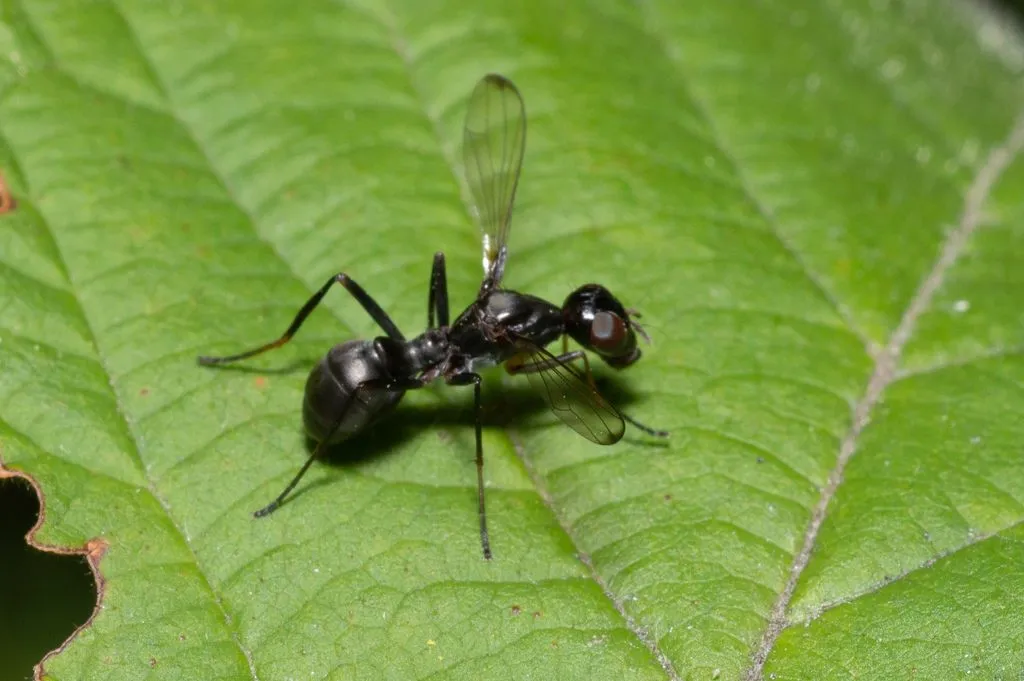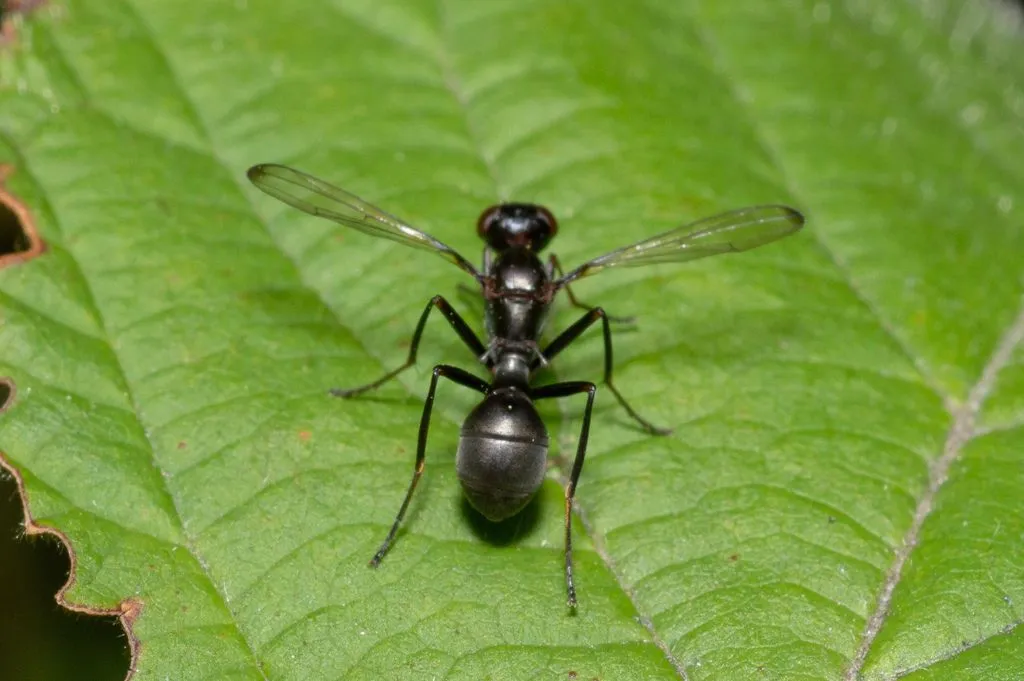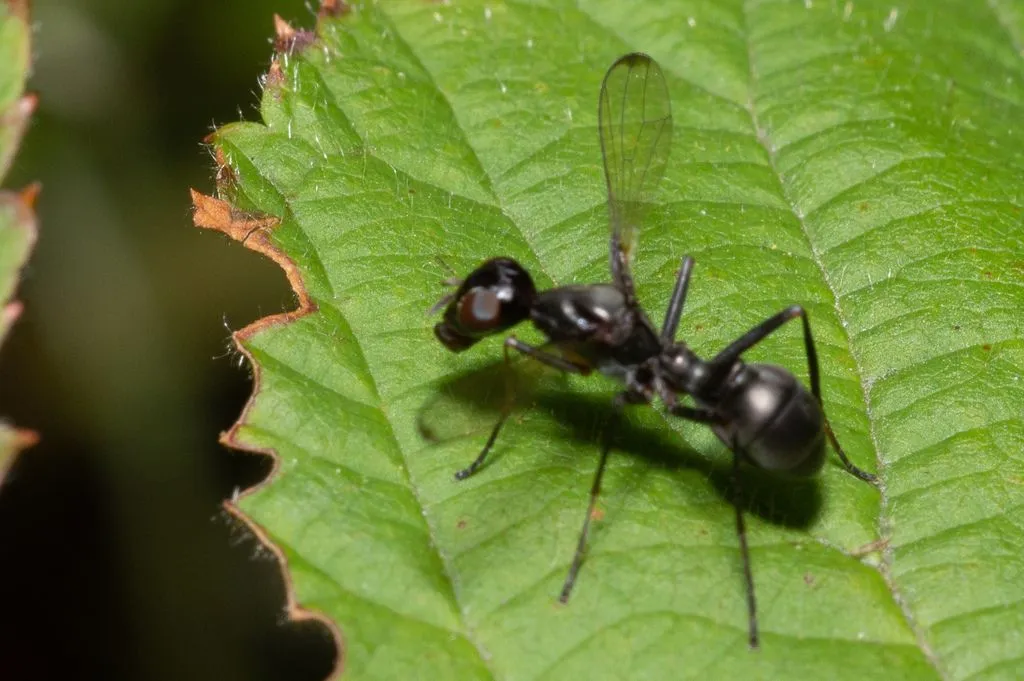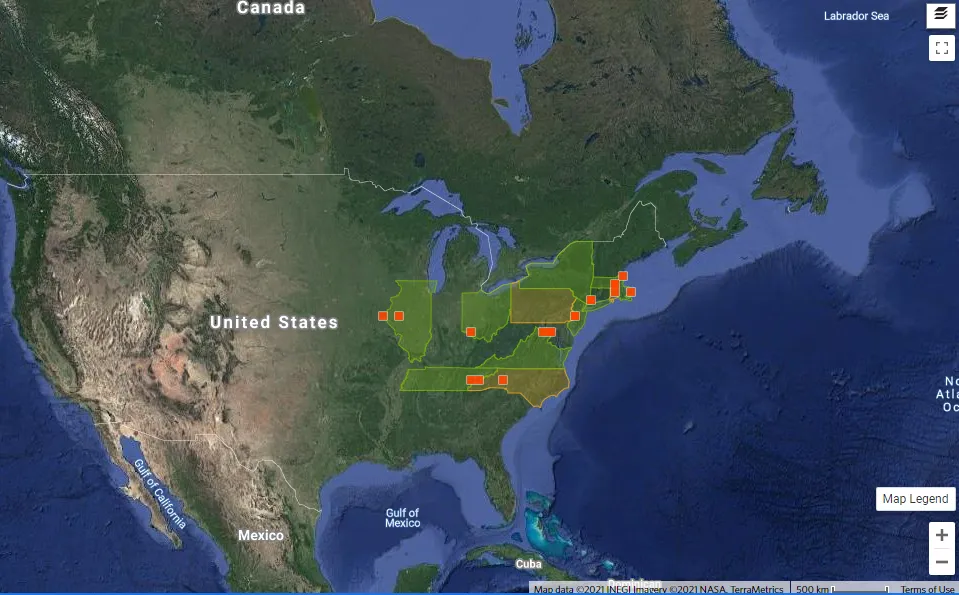Hello friends,
For this week's Insects of the World contest I am presenting an interesting species of fly:
At first glance, one can mistake it for an ant. And indeed that is what it is mimicking. You can recognize the myrm- in the prefix from the Greek myrmex meaning ant. Myrmecothea is a monotypic genus meaning that M. myrmecoides is the only species in the genus.

The clear wings help to add to the ant-like illusion and the segmentation of the abdomen look like the abdomen of a black carpenter ant in its range (Camponotus pennsylvanicus). It also has small dark coloration at the apex of its wings (R4+5).

Order: Diptera
Suborder: Brachycera
Infraorder: Cyclorrhapha
Zoosection: Schizophora
Zoosubsection: Acalyptratae
Superfamily: Tephritoidea (Fruit, Signal, and Picture-winged Flies)
Family: Ulidiidae (Picture-winged Flies)
Subfamily: Otitinae
Tribe: Cephaliini
Genus: Myrmecothea
Species: Myrmecothea myrmecoides

Not only does this fly look like an ant. But it seemed to behave like an ant as well. This individual actually was crawling along this plant's leaves and stems erratically as I tried to photograph it, very much like an ant would crawl. I'm uncertain what advantage this would impart to this species to look like ant versus a fly. Perhaps it is so that predator's avoid them since carpenter ants are rather nasty/aggressive and only specialized predators go after them. It's doubtful that they can fool actual ants however. I'd be interested to learn more about this fly's general ecology (what it eats, its general habitat, host plants, where it lays eggs, etc.) but I couldn't find much information on the subject.

This fly looks is seldom observed and is native to eastern North America down to South Carolina (according to BugGuide). I don't believe it's range is super well known however with only a handful of verified observations on iNaturalist from the spring and summer months:

This goes to show how little we know of most insects on our planet. You can contribute to scientific understanding from your own backyard when observing insects or other overlooked taxa.
The strange thing is that I came across photos of this fly on iNaturalist just a few days before
seeing one for the first time in the field. I attribute that to the flies all emerging at relatively the same few span of days. You can actually track emergences of different animals like this on iNaturalist which is a cool use of citizen-science/big data/monitoring.
Thank you for reading and I look forward to the your entries in this week's contest.
